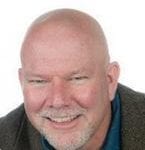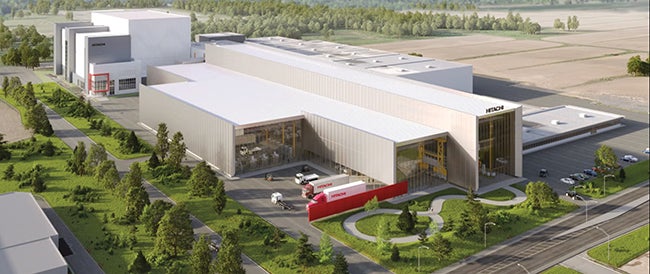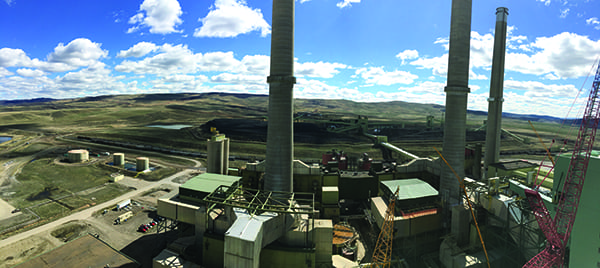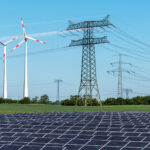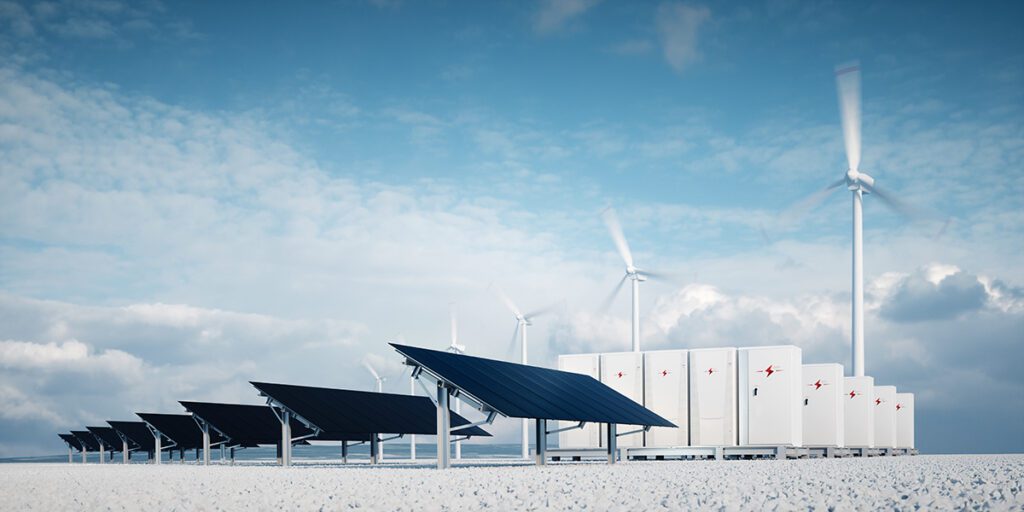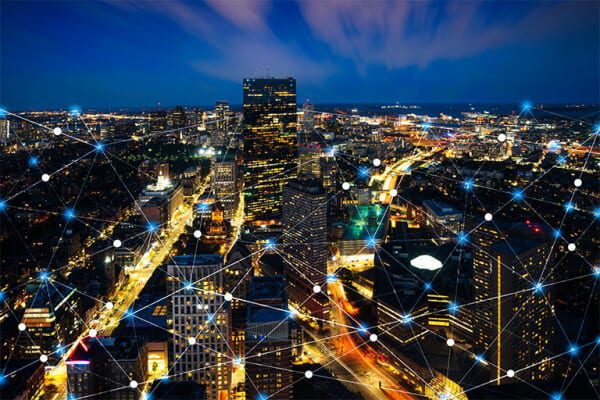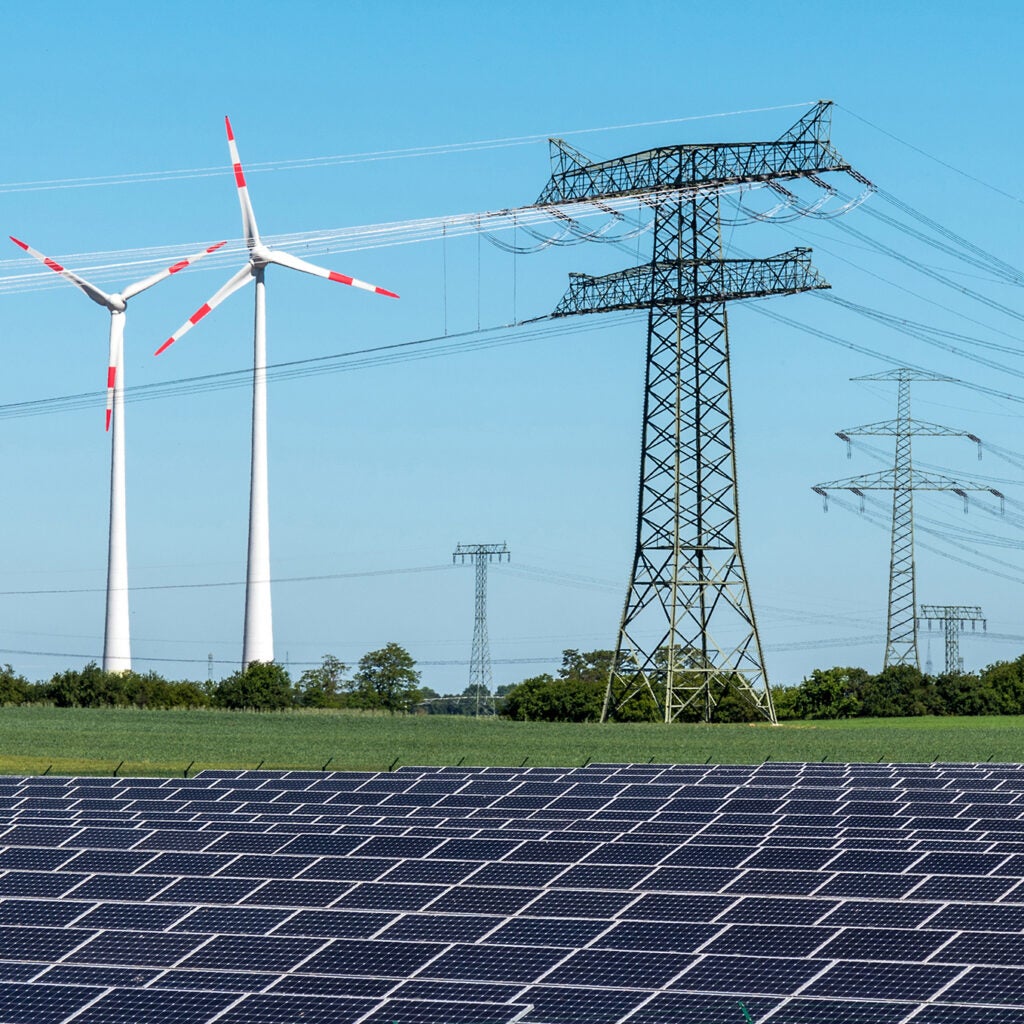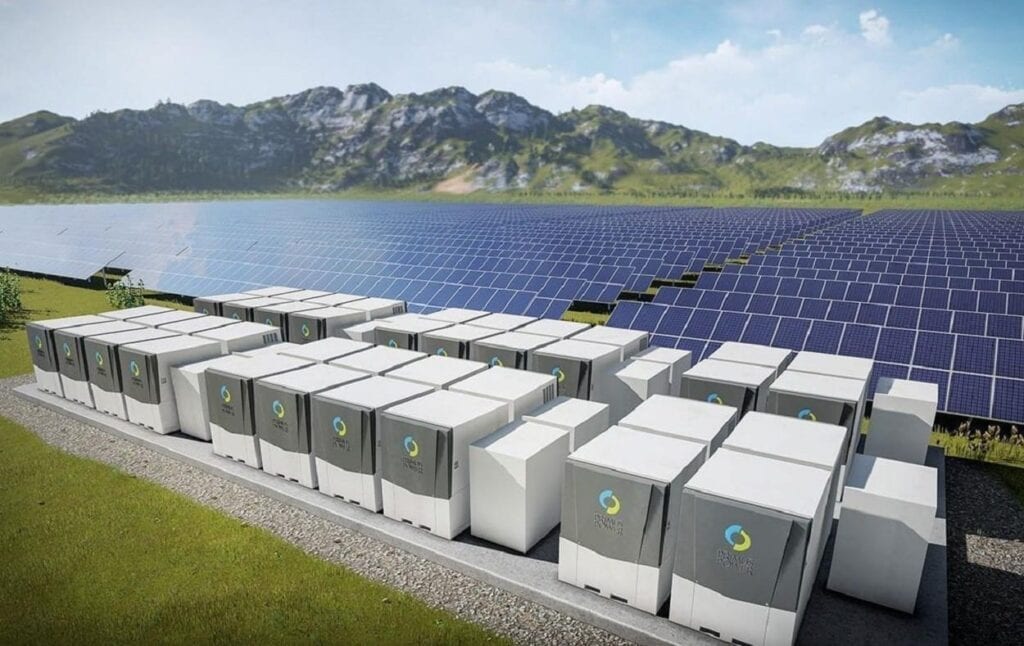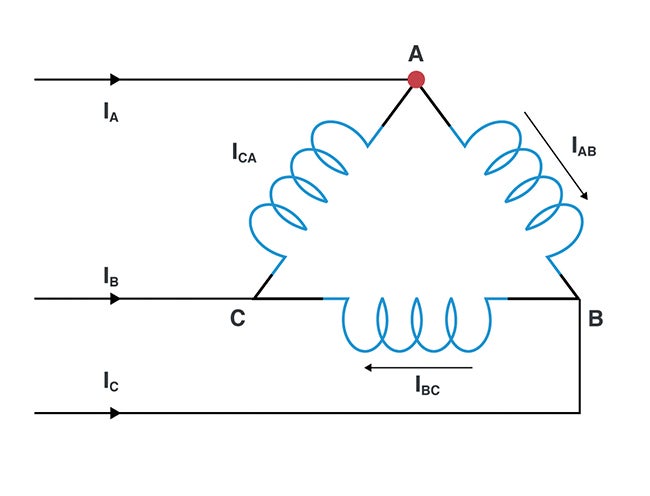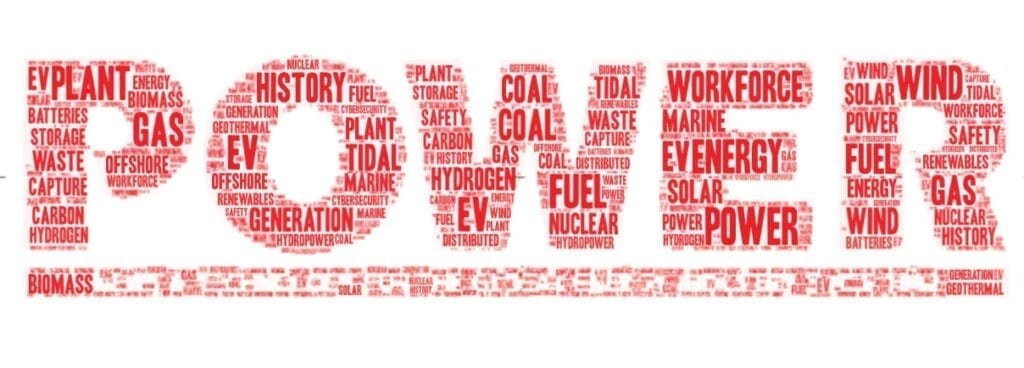Power generators and transmission system engineers have to rethink their planning strategies, and must continue to develop tools to allow more solar, wind, and other forms of renewable energy to populate the power grid.
Integrating renewable energy resources such as solar and wind into the electric power grid involves addressing challenges, starting with the intermittent nature of renewables. POWER has often highlighted the issues, noting in part a lack of physical grid capacity to accommodate supply and demand in locations with the best resources. Another issue is that as the share of renewable energy increases, the lack of real-time network management at low voltages can bring network instability, which impacts reliability. Other problems include voltage instabilities, frequency inconsistency, and harmonic distortion of the power system.
This often requires projects to modernize the grid, along with the use of new technologies for both asset and grid management. Utilities and grid operators are utilizing energy storage, often at substations along the grid, to ensure reliable and efficient electricity delivery. The use of artificial intelligence (AI) also is supporting the addition of solar, wind, hydropower, and more to grids worldwide (Figure 1), as utilities and other power generators seek ways to utilize an ever-growing supply of data from renewable energy assets.

Brett Benson, director for Global Renewable Solutions at Emerson, noted, “Utilities and system operators face a number of challenges by integrating renewables into their systems. Not long ago, a utility would have had a few handfuls of large thermal generating assets strategically and geographically scattered across their system with very distinct operating profiles, heat rates, and diverse energy demands. These assets are very predictable and reliable for managing the supply of power to customers—residential, commercial, and industrial.”
Benson added, “The addition of solar PV [photovoltaic] and wind assets has greatly changed this dynamic. The most obvious is the volatility of the intermittent generation of these renewable power-generating units. If it was just a few of these units, it would be fairly manageable with only fine adjustments necessary, but the growth in renewable generation has meant there may be dozens or even hundreds of solar and wind farms that may range from 2 MW to 1,000 MW. The utility or system operator has gone from managing a handful of large, reliable generation sources to adjusting generation for a multitude of various size and variable output assets.”
Smart grid technologies have been, and continue to be, developed to optimize energy distribution, manage grid operations, and improve grid resilience—all of which can enhance the integration of renewables. Investing in new transmission lines and upgrading existing ones can help deliver power from renewable energy sources to areas with high demand for electricity.
“Significant investment in grid modernization and advanced control systems is necessary to handle the variability and distributed nature of renewables. The deployment of energy storage solutions is also crucial to mitigate intermittency,” said Hala Ballouz, Electric Power Engineers’ co-founder and CEO. “Furthermore, a skilled workforce is needed to study, manage, and maintain these new technologies. Finally, bringing the industry together to create more comprehensive and consistent policies and regulations surrounding renewable integration is a must to ensure that we are creating an environment to maintain the reliability and resiliency of the grid.”
“One of the most widely acknowledged challenges with renewable integration is the variability and unpredictability of generation. Wind and solar do not always align with demand—solar generation peaks mid-day, while peak demand often comes in the evening,” said Bryan Schurko, Strategic Growth Leader of Power Delivery at Stantec. “This mismatch requires new tools and approaches to ensure reliability. Upgrades may also be required due to certain grid infrastructure limitations. Another issue is that renewable resources are often located in remote or rural areas where transmission infrastructure isn’t sufficient to move electricity to where it’s needed. This congestion adds strain to already aging infrastructure.
“Beyond the physical grid, the administrative and the investment side of renewable integration poses barriers too,” said Schurko. “Interconnection queues have become increasingly long and complex, especially in regions experiencing high volumes of new solar and wind projects. Even with reforms like cluster reviews underway in some jurisdictions, utilities and system operators still face resource constraints in processing and approving applications, which delays deployment and adds cost uncertainty for developers.”
Brendan Andrews, vice president, Energy and Infrastructure at Bureau Veritas North America, told POWER: “To integrate renewable energy to the grid [Figure 2], utilities and grid operators face challenges including policy, maintaining grid stability and reliability, aging infrastructure not adequate to handle the increased load from renewables, long interconnection cues and slow planning processes, regulatory roadblocks, and managing and coordinating multiple stakeholders throughout any project. One of the reasons why the grid struggles to integrate modern renewable energy sources efficiently is that much of the infrastructure in the U.S. dates back to the 1950s, including transmission lines and substations. Upgrading and modernizing the grid is essential to handle the increased load from renewable sources.”

Andrews added, “Renewable power generation is not the issue, transmission is. Enhanced transmission infrastructure, accompanied by grid enhancing technologies, will reduce congestion and improve reliability.”
Obstacles to Deployment—The Interconnection Queue
Owners and operators of renewable energy projects know there are several obstacles to overcome even after a project is permitted and built. The biggest task is often getting through the generator interconnection queue (GIQ). Every independent system operator and regional transmission organization—the grid operators—in the U.S. has reported backlogs in its GIQ, and it can sometimes take years to process and complete an interconnection request. Lawmakers, along with energy companies and lobbyists for both thermal and renewable energy, have long decried the permitting process in the U.S.
“Grid interconnection is complex and time-consuming,” said Ballouz. “Utility teams are continuously working toward an optimal solution for renewable integration, and with the changes in policy and regulation for how these studies are to be conducted and the number of solutions that may be available for any reliability concern are just going to continue to increase the complexity of this process.”
Said Benson, “The other challenge is managing the interconnect of these resources. Where there is a substation, or at least a high-voltage line, you can arguably add generation there … whether that’s a good spot in the grid for it or not is a different question and one that definitely complicates planning and management.”
Benson told POWER, “No matter the interconnection, there is always permitting and work that needs to be done to prepare for new generating units, regardless of megawatt size. With these variable resources online, where you were once managing the handful of thermal generators, the utility and system operator must now monitor [and sometimes curtail] dozens or more intermittent assets and balance the system against that ‘top of the stack’ generation by ramping the thermal fleet. This is complicated as ramp rates and grid congestion are serious factors in the decisions on which unit to ramp. These decisions also increase fatigue on those units, many of which were designed as a fixed baseload, thus decreasing their availability and reliability while increasing maintenance costs.”
Adding Energy Storage
Those who spoke with POWER generally agreed on the measures needed to support grid integration of renewables. “There’s not one silver bullet but a combined strategy that adopts several methods to provide power grid stability,” said Benson. “The most obvious is to add fast-acting energy storage systems to the grid to provide that instant support when a cloud moves over a solar farm or the wind dies down before traditional generation can ramp up. But going deeper, there needs to be an overall plan by the utility and system operator to govern and protect the grid.
“This incorporates enforcing compliance to regulations and use of transient models by non-traditional generators, adopting resiliency standards like IEEE-2800 and NERC CIP [North American Electric Reliability Corporation Critical Infrastructure Protection], locating and permitting power generating units at strategic locations, and very importantly, working with customers on load management programs, another way to respond quickly to intermittent generation,” said Benson.
“Inconsistent and fluctuating renewable energy sources are among the major challenges facing integration,” said Alex Ince-Cushman, co-founder and CEO of Branch Energy, a renewable energy and energy storage company. “Wind and solar energy vary in production, making energy storage an ideal solution to mitigate periods of inactivity. Utilities also face challenges integrating renewables in areas isolated from traditional power plants. DERs [distributed energy resources] are solving these challenges. They serve as backup sources during grid power outages and help reduce energy losses during long-distance transmission.
“Grid stability improves when we bring flexibility closer to the edge. Behind-the-meter assets like batteries, paired with intelligent controls, allow for real-time demand shaping and localized support,” said Ince-Cushman. “These resources operate in coordination, guided by clear price signals and responsive software. In turn, they reduce strain, smooth out variability, and help renewables integrate seamlessly without needing major infrastructure overhauls.”
Kaio Kopko, engineering product manager with Operador Nacional do Sistema Elétrico (ONS), the Brazilian national system operator, noted that renewable resources—solar, wind, and hydropower—make up more than 80% of that country’s energy output. Hydropower has long been Brazil’s leading power generation resource, and wind and solar are continuing to grow.
“Wind and solar will [soon] be 45% of the grid,” said Kopko, who spoke with POWER at the recent AVEVA World summit in San Francisco, California. “We have an entire area dedicated to [gathering] data, and evaluating data models, using the cloud [to store data].” Kopko said the use of AI is important as ONS looks at optimizing the grid.
“Our [data system] is basically ChatGPT for ONS,” said Kopko. “AI will help us to find the best solutions. Being able to utilize automatic calculations is a huge improvement for us.” Kopko said Brazil’s renewable energy generation is “growing so fast, we’re dealing with a lot of curtailments.”
Kopko said adding more energy storage is one answer. Powin, a U.S.-based global energy storage integrator, and UCB, a leading provider of energy storage solutions in Brazil, earlier this year signed a memorandum of understanding to establish a partnership aimed at scaling the Brazilian energy storage market. The companies said the partnership is focused on addressing the growing demand for utility-scale energy storage in the country, driven by the continued expansion of renewable energy in Brazil. Kopko said adding storage also supports grid reliability. He said the work of ONS will be in the spotlight at this year’s United Nations Climate Change Conference (COP30), scheduled for November in Belém, Brazil.
Brazil is building more transmission and distribution infrastructure (Figure 3) to support renewable energy. Engie Brazil recently awarded a $163.8 million design-build contract to Cobra Brazil for seven high-voltage electricity transmission lines (525 kV and 345 kV) across about 460 miles. Cobra Brazil, also known as Cobra IS, with this contract will now be in charge of building about 1,500 miles of high-voltage lines in several Brazilian states. The company has built more than 18,640 miles of high-voltage lines in Brazil over the past 20 years as part of public-private partnerships.

Caspar Herzberg, CEO of AVEVA, said his group’s work with ONS and other grid operators “is bigger than [just] AI. If you invest in digitization, invest in data, you can do significantly better. The vast majority of our customers want to add more data points. Our task is to make all this data available, and make sure the flow of data is seamless. It’s about helping customers make sense of anything they’re dealing with.”
Herzberg said integrating renewable energy into the power grid includes having the tools to understand what’s happening with transmission and distribution at any given time. “Take wind farms … we have to figure out every way to extract value out of their operations. We’re working with utilities across the world to analyze their transmission lines.”
Paying for Grid Upgrades
One often-asked question: Who should pay for grid upgrades to enable more and better integration of renewable energy resources (Figure 4)? Georg Rute, CEO at Gridraven, a company founded in Estonia that has based its U.S. operations in Austin, Texas, said investment for grid upgrades should be rethought when it comes to who pays for improvements.

“The fact that transmission owners in America do not pay for congestion is a major problem,” said Rute. “It’s the system operator, not the transmission owner, that pays for congestion by re-dispatching power plants. This additional fuel cost is borne by ratepayers and there is no penalty for the transmission owner that caused the problem. Nor is there any incentive for the transmission owner to fix it.
“Even worse, those incumbent utilities that own both transmission and thermal generators actually benefit from the high prices caused by congestion,” said Rute, whose company is known for its AI-driven dynamic line rating technology that addresses grid bottlenecks. “The lack of grid capacity prevents cheaper solar and wind from flowing into their territory and eating into their profits. In Europe transmission system operators are not allowed to own generation. Further, congestion revenue in Europe is earmarked for investing into the grid. The difference in the amount of money paid by a consumer in a high-price zone and the money received by a generator in a low-price zone that supplied that power is placed in a special fund that can only be used for strengthening the grid to remove the congestion that caused the price difference in the first place.”
“There continues to be much debate on this,” said Benson. “One of the strongest arguments is that a utility that builds or purchases power from a renewable asset is saving money from the free fuel source and significantly less personnel, thus those savings should be utilized for the grid upgrades [and paid for by the ratepayers]. The retort is if the power generating unit was dispatchable there would be no argument, but since the utility needs to supplement that [roughly] 30% capacity factor with another dispatchable generation, [it is] resulting in a higher per-MW cost than thermal generation. Fortunately, this is changing as battery energy storage prices have greatly come down, as can be seen in the latest Lazard Levelized Cost of Energy (LCOE) report, making a hybrid solar PV and battery storage plant a viable option in the right locations.”
“This varies by region, but cost-sharing is likely the only way to move forward with upgrades in a timely manner,” said Andrews. “This means splitting cost among various stakeholders including utility companies, developers, ratepayers, and government funding.”
Said Schurko: “In today’s environment, it’s clear that a shared approach to grid upgrade costs is necessary. Developers, utilities, governments, and ratepayers all benefit from a more flexible and modern grid, and each should play a role in financing these improvements. While utilities traditionally pass infrastructure costs to ratepayers, targeted government support and developer contributions—especially when upgrades enable specific projects—are also part of the solution.
“The bigger question is not just who pays, but how value is defined and allocated,” said Schurko. “The traditional ‘cost-causer pays’ model was built for a centralized system and does not reflect the complexity of today’s grid. Now that electricity flows in multiple directions and new players like aggregators and distributed energy resources’ owners are involved, cost-sharing frameworks need to reflect the shared benefits of reliability, decarbonization, and long-term resilience.”
Software and Other Technologies
Benson and others who spoke with POWER agreed that software solutions are among the best grid-enhancing technologies to support the grid integration of renewable energy. Other advanced technologies include better communication systems and advanced sensors, both along power lines and within solar and wind farms.
“Utilities once had only a handful of generating assets with predictable costs and output, and so was the daily load. Now, with the wide variability in daily generation and load, a utility must look to advanced software programs for managing the overall grid,” said Benson. “Some of this software directs the real-time operation of the generating assets to support the grid while others predict the demand [and available power] for the minutes, hours, and even days ahead. These are the systems that need to anticipate excess generation and charge the batteries at the most optimal time for them to be available to serve as their peak need.
“Sensors play a part within advanced distribution management systems [ADMS] to ensure the right amount of voltage is served to the end of the distribution line and, where there can be dips, they are quickly detected and resourced through tap changers,” said Benson. “In years past, the distribution system may have been sourced excess power to ensure adequate voltage thus more generator output, now this can be leaner to match demand saving on lost MWs. These sensors also provide the utility with pinpoint and instantaneous line break information for speedier outage recovery.”
Andrews said, “Renewable energy resources depend on weather conditions, which introduces a variety of technical challenges to overcome to safely connect them to the grid while maintaining stability and reliability. Integrating technologies like Static Synchronous Compensator (STATCOM), inverter-based resources, advanced sensors and monitoring, energy storage, and advanced conductors can significantly enhance grid stability and efficiency.
“STATCOM can significantly enhance the power grid by providing voltage stability, improving power quality by mitigating voltage fluctuations, and offering fast response times to changes in power loads within milliseconds,” said Andrews. “Advanced conductors can double the capacity of existing transmission lines allowing for more electricity, including renewable energy, to be transmitted without the need for new infrastructure. Reconductoring existing lines with advanced conductors is faster and cheaper than building new transmission line by leveraging existing poles and towers.”
Energy storage also is taking on increased importance when it comes to supporting renewable energy, providing value along with more flexibility and balance for the grid.
“Energy storage, whether from battery, pumped storage, or mechanical storage, fills an important gap that could easily make managing grid frequency incredibly hard to do in areas away from large, rotating turbines,” said Benson. “Their ability to store excess energy [aiding in their economy] and releasing it quickly to maintain frequency and inertia on the grid through grid-forming inverters is an essential service. The more solar and wind that connects to the grid, the more essential these resources are.
“Additionally, if you look at what was once called the ‘duck curve’ in California, [it] has greatly changed in the last 10 years where it’s now a valley,” said Benson. “The more you can reduce the amount of cycling of large thermal generation, the more the savings on capital expenditure, and operations and maintenance, can be had by the utility through increased reliance on energy storage during those non-solar hours.”
“Grid-enhancing technologies are most impactful when they empower assets behind the meter. Smart inverters, building-level control systems, and real-time data platforms enable distributed systems to act as responsive grid resources,” said Ince-Cushman. “AI plays a critical role in optimizing when to store, consume, or export power based on cost, load, and resilience needs. These tools let customers actively support the grid while cutting costs and improving reliability.
“DERs integrate renewables by bringing capacity closer to where it’s needed—and faster than traditional infrastructure can,” said Ince-Cushman. “Batteries, rooftop solar, and load controls reduce grid strain during peak hours and help manage volatility. These systems also enable buildings to participate in energy markets directly, stacking value across bill savings, demand response, and reliability.”
Said Andrews: “Energy storage plays an integral role in grid stability and resilience. Energy storage systems can store excess energy generated during periods of high renewable generation, such as sunny or windy days, and release it during periods of intermittency/low generation or high demand. This helps balance supply and demand, ensuring a stable and reliable supply of power.”
Arielle Kadoch, Canada Sector Leader for Power Delivery at Stantec, told POWER: “Energy storage will play a foundational role in supporting the future power grid, including those that integrate renewables. One of the most important functions of storage, particularly battery energy storage systems [BESS], is helping resolve the timing mismatch between generation and demand. Solar, for example, peaks during the day, but demand often peaks in the evening—storage allows that clean power to be shifted to when it’s actually needed, storing excess renewable energy otherwise wasted and releasing it during high-demand periods.”
Kadoch added, “Storage also provides critical grid services like frequency regulation, grid stability, and resilience by providing backup during outages, weather events, or disruptions—all of which become more valuable as inverter-based generation displaces traditional synchronous machines. Additionally, storage can relieve localized congestion on both the distribution and transmission system, deferring the need for costly infrastructure upgrades. As the technology continues to mature, and if combined with other smart technologies such as smart inverters, storage will be more powerful and remain an essential bridge between renewable energy and grid reliability.
“Energy storage is what makes renewable energy truly reliable. Without energy storage, we would be missing a critical piece of the puzzle in creating a more flexible and resilient clean energy future,” said Kadoch.
DERs Support Renewable Integration
Several of those who spoke with POWER said the use of DERs also supports grid integration for renewables, though it also comes with questions.
“Traditional utility business models may face conflicts with the decentralized nature of renewable energy generation,” said Ballouz. “While initiatives like FERC [Federal Energy Regulatory Commission] Order 2222 that aim to enable distributed energy resources to participate in electricity markets can help, state-level implementation often lags, limiting/delaying implementation opportunities.”
Said Andrews, “DERs enable the development of microgrids, which can operate independently or in conjunction with the main grid. Microgrids enhance energy resilience by providing reliable power during outages and supporting the integration of local renewable energy sources. Rooftop solar is an example, it can be used to inject power back into the grid, also referred to as virtual power plants [VPP]. By leveraging the capabilities of rooftop solar and other DERs, we can significantly enhance the integration of renewable energy resources, making the grid more flexible, efficient, and resilient.”
“Small-scale energy resources such as rooftop solar panels or diesel generators could help support the integration of renewables in a number of ways,” said Benson. “For one, they can be looked at as additional fast-response generation should there be a need for a small amount of extra MWs on the grid. Clouds may be over a utility’s solar farm, but if enough behind-the-meter generation is out there it can either be activated to serve its host’s load, detaching that demand from the grid, or sending that excess power to the grid. Some of these DERs may be clustered, say at a university, as to island the campus in a microgrid, allowing the utility to shed them as a load in the moments when the generation is needed during peak conditions or lost generation.”
Schurko said several technologies “are helping utilities modernize the grid to handle more renewable energy,” and added that “there are a few top technologies or systems that make large cost-effective improvements. At the core is enhanced visibility—if grid operators can’t see what’s happening in real time, they can’t manage it. That’s where upgraded SCADA [supervisory control and data acquisition] and communication systems come in. These systems [Figure 5] collect and transmit operational data across the grid, allowing for faster fault detection, better load balancing, and more accurate forecasting.

“Platforms like advanced distribution management systems are critical for managing this data, providing operators with tools to monitor voltage, reroute power, and manage distributed generation,” said Schurko. “Meanwhile, distributed energy resource management systems [DERMS] give utilities the ability to control and aggregate small-scale resources like batteries and rooftop solar systems. Together, these technologies help utilities operate the grid more efficiently while supporting two-way power flow and resource diversity.”
Kadoch said DERs such as rooftop solar, batteries, smart appliances, and even electric vehicles (EVs) “are decentralized assets … but they can have system-wide benefits when they are aggregated and coordinated properly. One of the most impactful ways DERs support renewable integration is by absorbing excess generation from utility-scale wind and solar farms. For instance, EVs or water heaters can be programmed to run during mid-day solar peaks, reducing curtailment and flattening the net load curve.”
Kadoch added, “DERs also help relieve congestion on the transmission system by serving local load, especially in areas that would otherwise be grid-constrained. When combined with digital platforms like DERMS or virtual power plants, DERs can be dispatched to support the larger grid—providing voltage support, frequency regulation, and even emergency backup. While DERs and utility-scale renewables are often planned separately, when they’re deployed as part of a coordinated strategy, they offer a powerful tool for decarbonization and system flexibility. Distributed energy resources are the key to unlocking the full potential of renewable energy by bringing flexibility, resilience, and innovation to the grid.”
Uncertainty About Investment—and Incentives
Energy industry analysts, as noted earlier, agree that investment—whether public, private, or a combination of both—is needed to facilitate grid upgrades that could help with the integration of renewable resources. There also is agreement that incentives to make those investments are necessary, but uncertainty about incentives is growing not only in the U.S., but also worldwide as governments mull budgets, and private investors remain concerned about legal and regulatory issues.
Said Kadoch: “Utilities and system operators need certainty around the need for investment to incentivize continued upgrades to a grid that can effectively integrate renewables. Certainty can be provided by regulators, policymakers, and developers who facilitate new markets for services like demand response, energy storage, and smart grids, and as a result this would reduce outages, improve system flexibility, and enhance grid reliability and resilience.
“There could be an advantage to combine public with private funding to reduce the risk of major grid projects as they look to reach final investment decision,” said Kadoch. “As an example, having government cover preliminary work, such as environmental work and permitting, while private partners fund construction and operations.”
Benson noted making grid upgrades to help with the integration of renewables is just one reason to modernize infrastructure. “In many cases, grid upgrades will go hand-in-hand with overall grid reliability [storm mitigation, demand growth, etc.], primarily paid through rate recovery, sometimes with some government support,” said Benson. “Other upgrades directly attributed to new renewables, say those required for a new data center, may be partly or fully paid for by the company or companies that are seeking the net-zero generation.”
Government support—or lack thereof—also will impact how much renewable energy is added to any country’s grid. Advocates for renewable energy are particularly concerned about the current political climate in the U.S., as federal funding is pulled from renewable energy projects. Some lawmakers, such as in Oklahoma, are pushing for measures to restrict renewables; many county governments across the U.S. already have signaled they will not approve clean energy projects in their areas.
Ballouz said, “Supportive policies and regulatory frameworks that incentivize renewable integration, streamline interconnection processes, and fairly compensate for grid services are essential for optimizing the contribution of renewables to a stable power grid. The government plays a significant role through federal and state-level funding and incentives.”
Ballouz noted programs from the Department of Energy, funding from the Bipartisan Infrastructure Law, and tax credits from the Inflation Reduction Act (IRA) “all contribute to grid modernization and distributed energy projects, which include renewable integration. State-level programs, such as California’s Microgrid Incentive Program (MIP) and New York’s NY Prize, also provide funding.”
The future of that funding, though, is uncertain—particularly in the U.S. “The Trump administration’s approach to energy policy has generally favored fossil fuels over renewable energy,” said Andrews. “A repeal of the IRA would drive up electricity bills because less low-cost clean energy would be available and fewer electric vehicles on the road would increase spending on gasoline. While there have been some mentions of infrastructure priorities that include transmission and energy storage projects, the overall policy direction seems to be less supportive of renewable energy integration compared to previous administrations.”
—Darrell Proctor is a senior editor for POWER.

